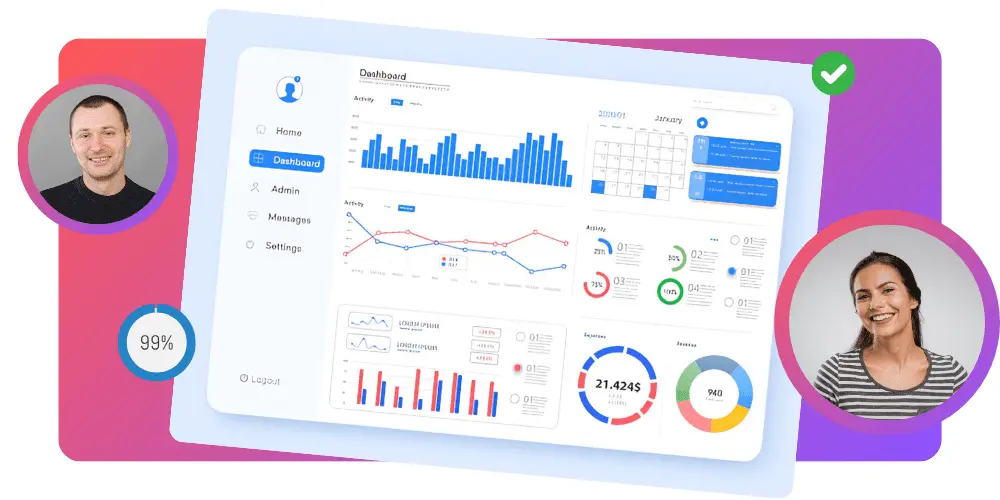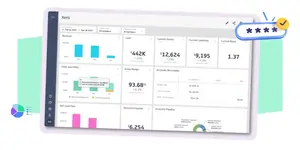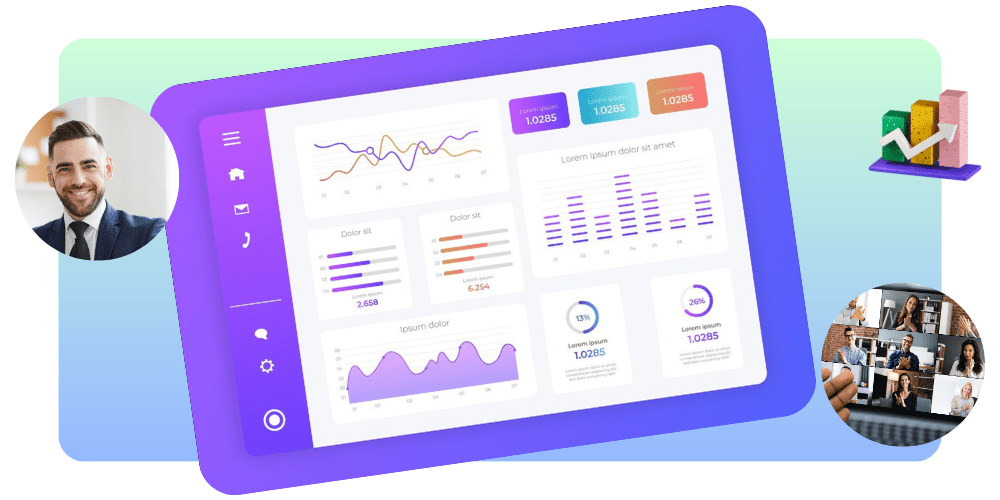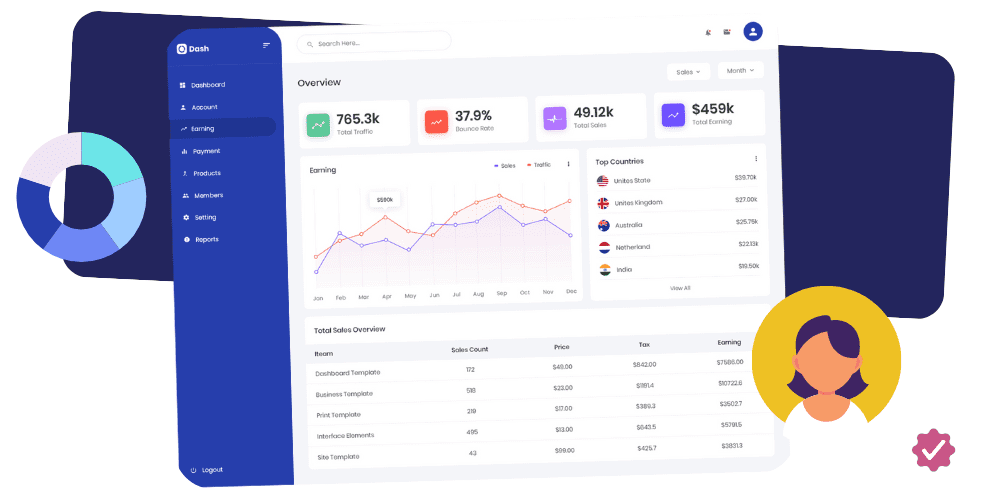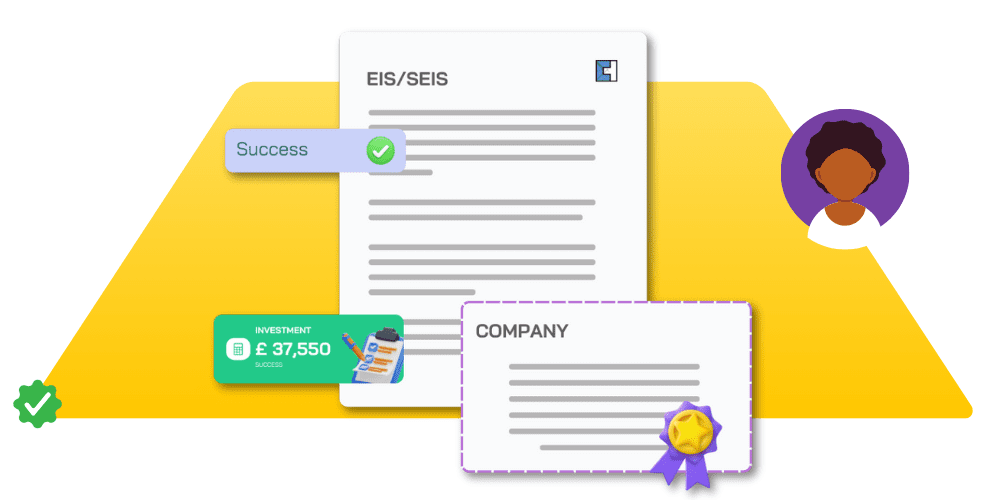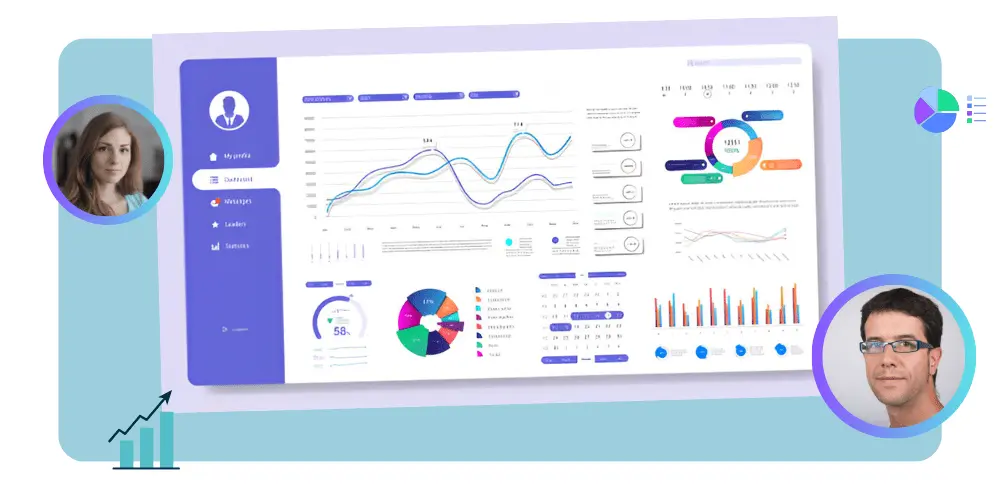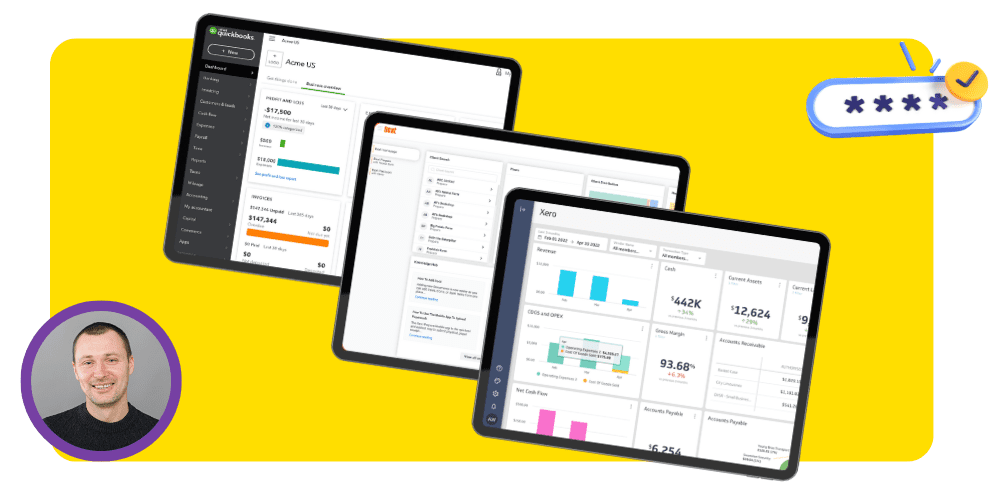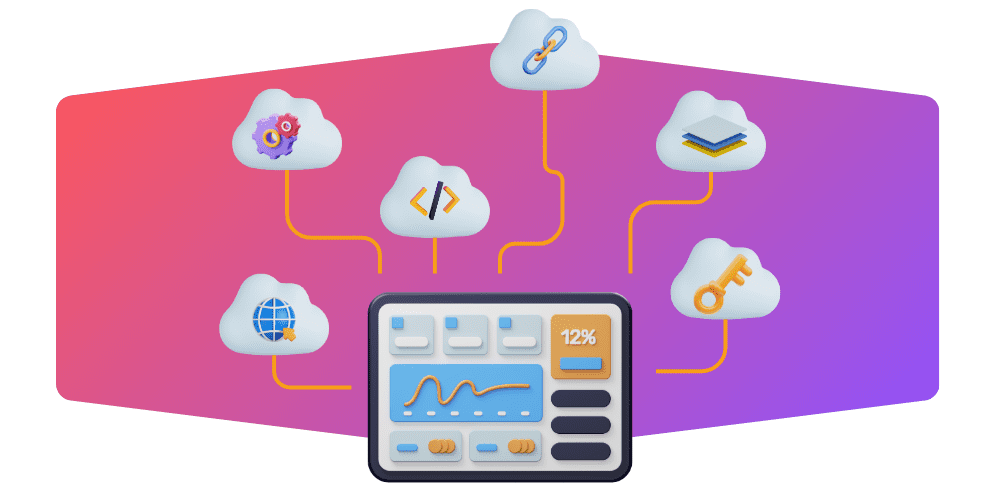Understand Finance for Non-Finance Managers
Money management is vital for organisations, and who does it better than people with accounting and finance expertise? These finance executives are highly effective at managing the day-to-day finances of a company, which ensures that a business survives both in the short and long run. However, it is crucial for non-finance managers and other staff to know finance as well in order to make the company grow progressively. This guide will help you understand why understanding finance is essential for non-finance managers, the key concepts and elements of finance, and the first steps to take.
Importance of Finance for Business
Finance is the science of money management that helps businesses understand financial management through reporting structures, modelling and frameworks. Moreover, it can influence the progress of projects and will also ensure improved financial performance by following a set of guidelines and rules to comply with. Finance plays the role of making sure that financially viable projects are pursued, the ROI they generate translates into net profits and the most efficient value-generating tasks are performed. It can be linked to planning for the future through effective budgeting and forecasting, measuring against the plan using management accounts service and performance reporting tricks such as KPI and utilising this to improve performance through cost accounting, process improvement and decision making.
As a business owner, you will come across a wide range of terminologies associated with accounting and tax, which is important to understand if you are to succeed in becoming fluent in finance knowledge.
Importance of Finance for Non-Finance Managers
A comprehensive understanding of the key concepts of business finance for non-financial managers makes their decision-making effective and gets them closer to their ultimate goals and objectives. Executives and directors of a company must interact with their crucial finance employees regularly. The interaction helps in understanding what your company’s financial profit and loss accounts are telling about the financial situation of the company and its performance.
It is also necessary to get an insight into how the decisions taken by non-finance managers can heavily influence the finances of the company. This knowledge about finances over time can help company executives understand how to acquire resources and allocate them. Moreover, the executives can further communicate the subject matter effectively to the non-finance managers of the firm.
Learning finance for non-finance managers develops their ability to manage the daily financial aspects of an organisation effectively. Furthermore, it can help them understand various financial reports in detail and make critical business decisions effectively. To cater to this need, many institutes have designed courses on ‘finance for non-finance managers’ online. These training courses are designed in a way that enrolled non-finance managers can learn convoluted finances easily, as they lack basic knowledge.
Accountants or trained accounting professionals can also be used to help train or explain complicated financial processes to non-financial managers. Some Chartered Accounting Practices help their non-finance clients understand the key topics before they do any work with them, which makes the communication easier to manage compared to if they had no knowledge. Ask your specialist finance provider to provide you with the relevant training if they haven’t already done so.
Key Finance KPIs Non-Finance Managers should know
Most of the accounting and finance programmes available out there provide sufficient expertise on Key Performance Indicators (KPIs) to help non-finance executives understand the KPIs they need to select to measure their business performance accurately. They should also learn how to design. Executive dashboards as these will help them present these KPIs as a visual representation and, therefore, provide a quick visual overview of the business performance.
Generally, senior management does not spend too much time on minute details of a financial statement to measure the performance of a business. Instead, they consider major KPIs as indicators to measure business performance. Using these indicators, they might request further data or make key decisions.

Every business has different KPIs to analyse business performance. You may have to outsource the process of designing your business KPIs to someone who can work with your non-finance managers, whilst also providing the relevant training.
Advantages of Learning Finance for Non-Finance Managers
According to our business advisors, learning important financial aspects, along with training on high-performance financial tools, would help non-finance managers in terms of the following elements.
- Help them to work with and analyse critical financial statements.
- Guide them to make more informed decisions regarding the pricing of goods or services that the business offers.
- Help them understand various types of costs and how they can reduce them by applying cost-cutting methods.
- Guide them to choose the best product mix.
- Help them communicate more effectively with finance personnel such as lenders, banks or investors of their businesses.
- Help them utilise important financial terms and concepts, along with numerous financial techniques, to engage in effective decision-making.
Key Concepts of Business Finance required to Succeed even in non-finance roles
Organisations around the world will always prefer to offer executive positions to those individuals who at least have a basic understanding of accounting and finance, and how it plays a pivotal role in the success of an organisation.
What is the Balance Sheet?
The balance sheet is a financial account that helps business owners get an insight into their company’s financial capacity and strength at a certain point in time. The balance sheet is an indicator of the business performance and tells the company how much it has in its treasury to achieve its annual targets. It summarises assets and liabilities on a single sheet.
Assets
Assets are the tangible or intangible possessions the company has, and liabilities are everything that the company owes to other businesses, individuals or banks.The tax treatments may vary depending on the asset and time; for instance, assets for the digital age may have different tax liabilities as compared to the past, when the rules might have been different.
When studying assets in detail, it’s important to understand fixed assets and current assets. Fixed assets are those assets which generate probable economic benefit over a long time and are depicted with the help of their depreciated values. These can be plant and machinery or business vehicles. It may include intangible assets like licences and intellectual property rights. Current assets, on the other hand, are short-term assets which may consist of shares, stocks, work-in-progress inventory and cash.
Liabilities
There are three primary types of liabilities:
- Current liabilities
- Non-Current liabilities
- Contingent liabilities
Current liabilities are those liabilities which are due for payment within a year. Examples of current liabilities can be the suppliers, vendors you owe money to, bank overdrafts, equipment purchases, and hire purchase agreements. Like short-term liabilities, there are long-term liabilities in which the amount you owe is due for payment after more than one year, such as bank and directors’ loans.
Besides, you must also know about shareholders’ funds when studying balance sheets, including information about the share capital, amounts paid by shareholders initially to acquire shares, and the company’s financial reserves. Sometimes, businesses opt for asset finance to have assets for their future business growth. Not understanding the necessary finance for non-finance managers may end in bad decision-making while requesting asset finance that may negatively impact growth.
Combined with sufficient information about the company’s cash flow, budget and profitability, the balance sheet can be highly efficient in crafting key strategies of the company and making effective management decisions.
Profit and Loss Statement
Profit is highly essential for a business to survive in the long run. Without gains, businesses will eventually end up selling their assets, closing the business or dedicating precious time and limited resources in order to create additional sources of funding to ensure that daily business activities are not disrupted and the business remains a going concern.
The profit and loss statements provide an insight into the performance of the business in terms of the profits it gained and the losses it incurred during an accounting period. The profit and loss statement usually covers the last accounting period, which is generally an entire financial year. These statements record critical information like sales, costs incurred and the profit and loss of the organisation. An accounting firm skilled in handling such statements may help you with your financial management. It also records any tax provisions for the given year, even if the taxes owed are outstanding.
The sales and purchases will be included in the profit and loss statement once the sale or purchase is invoiced. Like sales, it also records various costs associated with running daily business activities. The prices of fixed assets like machinery or vehicles are worked out by spreading their use over their working lives. Instead of factoring in the entire expenditure on the purchase of an asset, the profit and loss statement will include the annual depreciation charge on the asset. It does not include any transaction that has no direct impact on the organisation’s profit. For instance, acquiring a financial loan and the amount you have acquired would not be factored in. Still, the resulting interest payments and bank charges are included because they have a direct impact on the profit level.
Format of The Profit and Loss Statement
It is essential to remember when learning finance for non-finance managers that even if the business is VAT registered, the profit and loss statement will not include any VAT information. There is a set format that you must follow while preparing the profit and loss statement. We will now discuss the structure of most of the profit and loss statements:
- Turnover
- Cost of goods sold, which includes direct costs such as raw materials and equipment required to manufacture the product. Cost of sales is, most of the time, directly proportional to the volume of sales
- Gross profit
- Indirect costs like rents, rates and employee salaries. This section can also include the depreciation of fixed assets
- Operating profit is the profit before deducting interest and tax. It is also called Profit Before Interest and Tax (PBIT), which can also cover non-operating income and costs.
- Net interests that have to be paid
- Profit before tax, which results after subtracting interest from PBIT.
- Tax payable
- Net Profit
Cashflow
Regulating and managing the cash flow of a business is one of the primary concerns of business owners. Inability to manage the company’s cash flow will force the business to run out of the finances needed to run day-to-day business activities. A Lack of cash flow forecastingcan increase the risk of this happening and, therefore, create a significant threat to the business’s complete burn of its cash through uncontrolled cash burn.
The cash flow statement depicts the financial position of a company in terms of
- How much money is flowing into the business (cash inflow)
- How much of it is going out of the business (cash outflow)
These statements run and cover the same accounting period as the profit and loss statements. The cash flow takes the flow of money, which is in the business’s bank account, into consideration.
The cash flow statement tells more about the company’s timing to make and receive due payments.
Video: Types Of Financial Statements
This short video explains financial statements and the main types of financial statements.
How to prepare a Cash Flow statement
Such statements can easily be prepared by financial accountants by adjusting the profit and loss statement for non-cash items. These non-cash items may include:
- Depreciation of an asset
- Changes in the amount you owe to a business or the amount you have to receive from the customers. Any change in debtors and creditors. For instance, if the amount companies or customers owe you for total sales increases, your cash position will be negatively impacted.
- Financing activities like acquiring new loans or seeking external investment
These cash flow statements can get somewhat complicated to work out for non-finance managers, but with time, they can be mastered. In the beginning, they should talk to a financial professional within the company or seek expertise from a business accountant. Guidance from accounting specialists will help them to know more about the workings of a cash flow statement. Moreover, it will help them learn quickly by asking questions about things that are hard to understand. Cash flow statements are an excellent indicator of whether a business is making cash or just using it up to fulfil daily business obligations.
For instance, a business consistently generating cash for an extended period tells that the business is highly mature and profitable. These statements might tell you that a new and growing business might be just using its cash even if it has high-profit levels. Thus, this information may force the managers to start work on an additional source of financing to ensure business growth in the long run.
Profitability
We believe that businesses should develop the habit of measuring their profitability over time and time again. Profit margins can be utilised to measure the profitability of a business. Profit margins can be estimated by using the profit and loss statement. The gross profit margin shows the gross profit in terms of the percentage of turnover. For instance, if your company’s annual turnover is £150,000 with a cost of sales of £70,000, then your firm’s gross profit is £80,000 with a gross profit margin of about 53%.
The other term to consider here is the operating profit margin (net profit margin), which compares operating profit to turnover. Operating profit is the profit resulting after accounting for indirect costs.
You can then compare these profit margins to get a comprehensive understanding of your company’s profitability by comparing your company’s profit margin to that of other companies in the market.
- You can better judge your financial standing
- Highlight any areas of your business that need improvement or innovation
- Investigate whether your selling prices are facing upward or downward pressure.
- It can identify costs that are increasing over time by comparing the current profit margins to the company’s previous records.
- These profit margins can be assessed against individual product lines to identify the most profitable products
- It can identify if you have to start spending less on products that are giving low returns.
It might be difficult to extract such critical information from the company’s profit and loss statements. However, by speaking to qualified professionals like an accountant, you get all the financial information you need. The acquired information about your business helps you later to engage in positive decision-making. You can also measure your business’s profit by comparing your company’s profits to its assets.
Key terminologies to remember while measuring profitability
Return on Capital Employed
The return on capital employed is the profit the company makes before deducting interest and tax as a percentage of capital employed. It helps business owners gain insight into the returns they receive on the money acquired for financing the business, such as loans and shares.
Return on Equity
The other term to remember is ‘Return on Equity’, which is the profit before the deduction of tax and after the deduction of interest charges as a percentage of shareholders’ fund. Both of these ratios can then be compared with the similar figures of other businesses to find out how efficiently your company is utilising the money invested in it.
Every business does not use the same measures of profitability; for instance, a retail business might prefer to pay attention to profit per square foot of its shop area
Budgeting
Budgeting holds equal importance as analysing the annual financial records of a company to get better control over the business’s affairs. Companies need professional business forecasting services to devise strategies accordingly over time. This also requires them to have the most up-to-date information on the past and recent performance of the business at hand. Thus, budgeting is important as it lets the business owner manage and allocate their resources in the most efficient manner.
Preparing budgets is extremely important to set realistic financial targets and determine actual resource requirements. As part of the budget preparation, you should forecast your company’s potential cash flow in the future.
Detailed budgets should be prepared, like breaking down sales and costs for products individually. These detailed budgets help managers see where their company’s profits and cash flow are being generated. Well-conducted cash flow budgeting can help managers anticipate financial requirements and barriers in the future.
Realistic Budgeting
- Create realistic budgets, as the company’s financial figures from the previous year may lay guidelines for the future
- Managers must take numerous changes into account, such as a new competitor or a change in a business location.
- Forecasting on a monthly or weekly basis helps understand seasonal trends more effectively.
- Managers must create a wide range of different scenarios while forecasting
- Work out the probability of each scenario on the basis of how likely they are to happen
- You can utilise high-performance financial tools to make your budget forecasting even easier.
Budget Forecasting
Budget forecasting can help you identify various problems and opportunities associated with your business. By comparing actual performance against those forecasted in the budget, you can highlight and differentiate between weak and strong performing functions of your business.
You should begin by recording actual outcomes and comparing them to the figures forecasted in the budget. You can use percentages to witness the differences between the two figures accurately. Once you identify the differences, you should then dig deep down to identify the reason behind such variance. Do remember to update your budgets regularly to take an accurate account of actual performance against the one forecasted.
Difference Between Financial and Management Accounting

Why should non-finance managers hire an accountant?
There are numerous reasons to hire a finance professional, and for this reason, it is always advisable to speak to one. For instance, an accountant can help you get on top of your finances and decipher complex financial reports. Non-finance managers are more likely to come across numerous complications when working out their daily business finances. Reading complex financial reports is not easy; having someone competent and reliable can help non-finance individuals become self-sufficient faster.
Complex financial processes can consume a lot of precious time for a non-finance manager, as they have to get a solid understanding of key financial terms before even using the financial data. They can use this time in other value-adding activities; thus, this can not only increase the probability of making errors while working out financial statements but also waste a lot of valuable time.
Clear House Accountants are value-driven Accountants in London providing financial expertise and guidance to businesses of all sizes. Our accountants have worked with various clients over the years and understand the most common problems faced by business owners, especially small business owners. We work with business owners and make sure they understand the data they use in decision-making; we make sure they grow as non-finance managers every step of the way.





